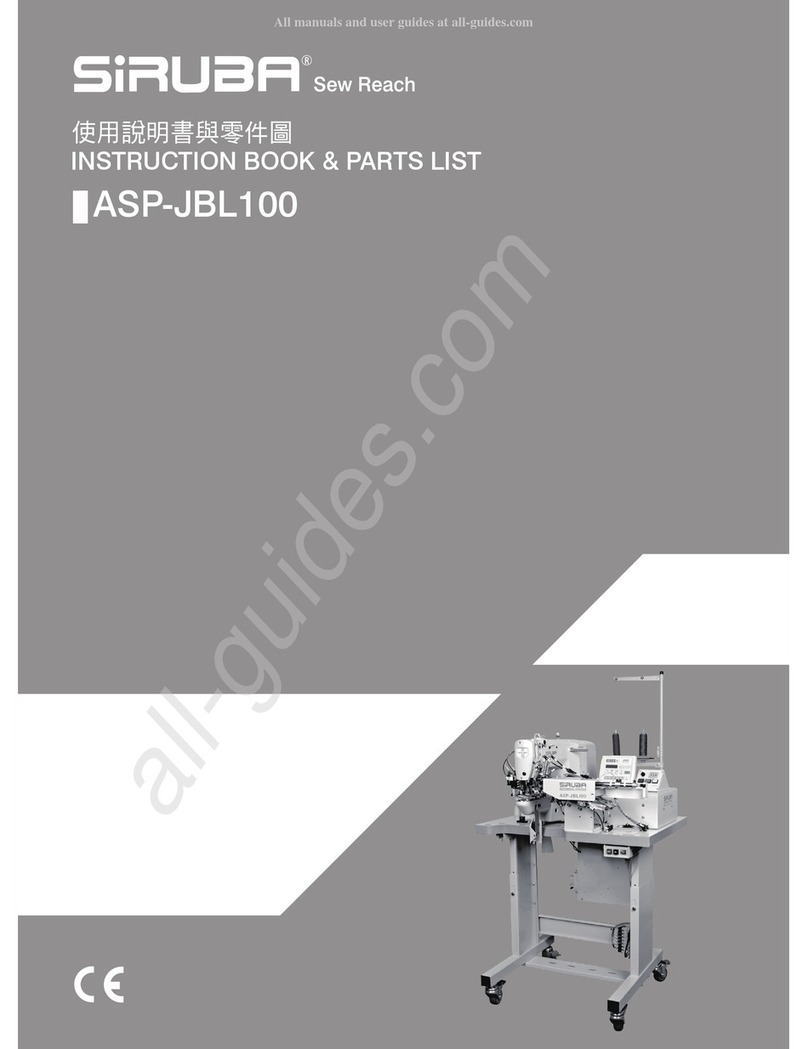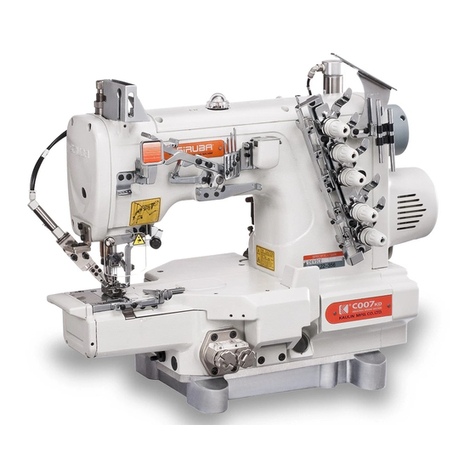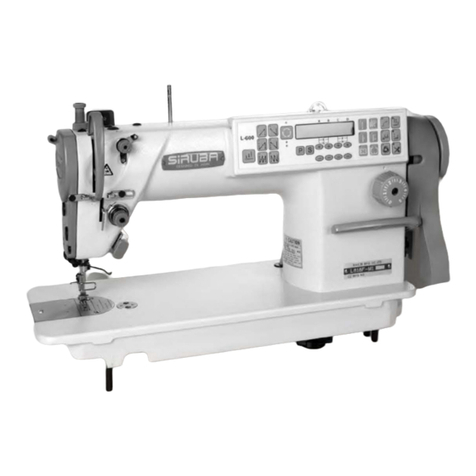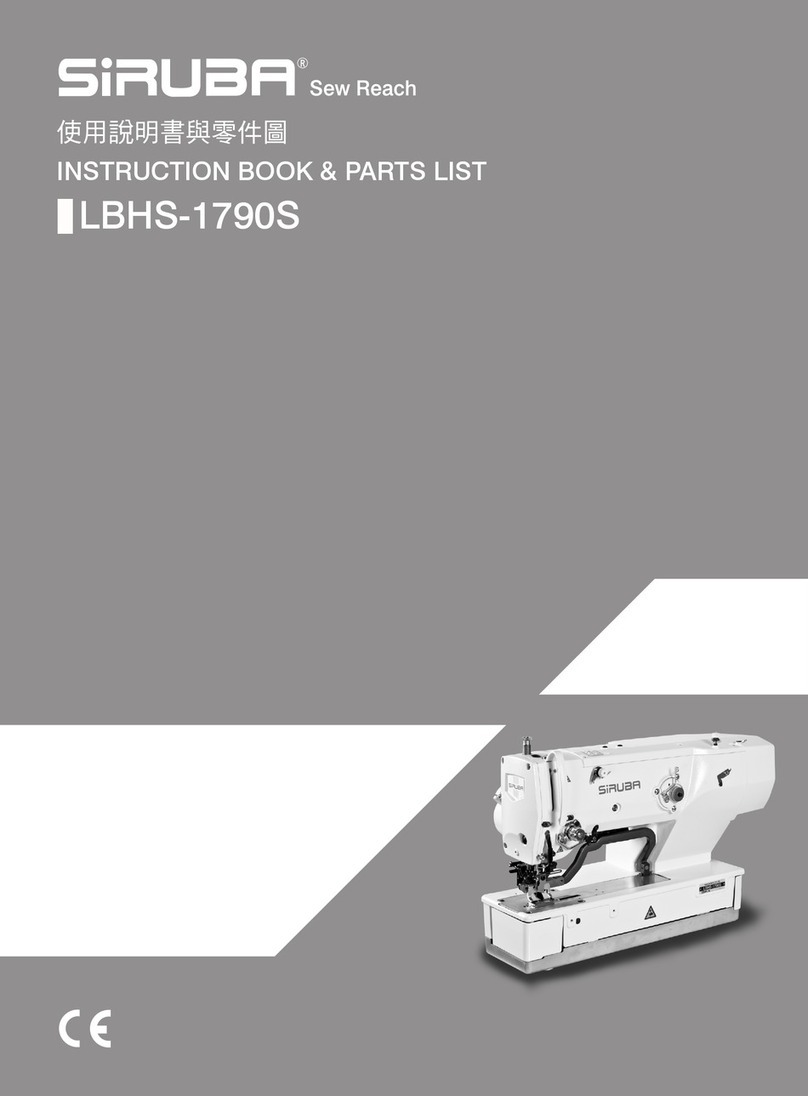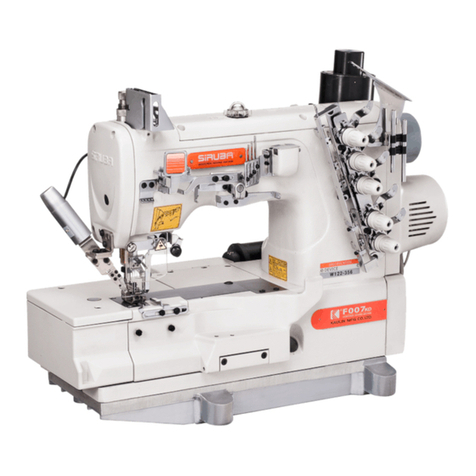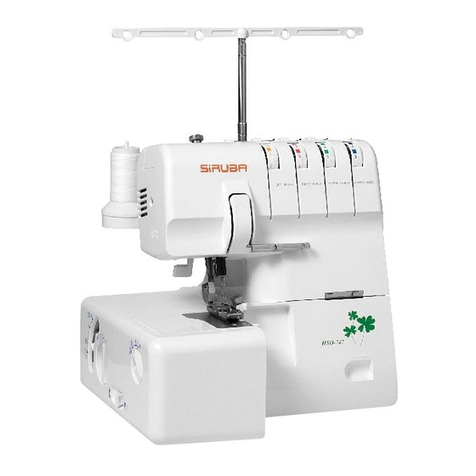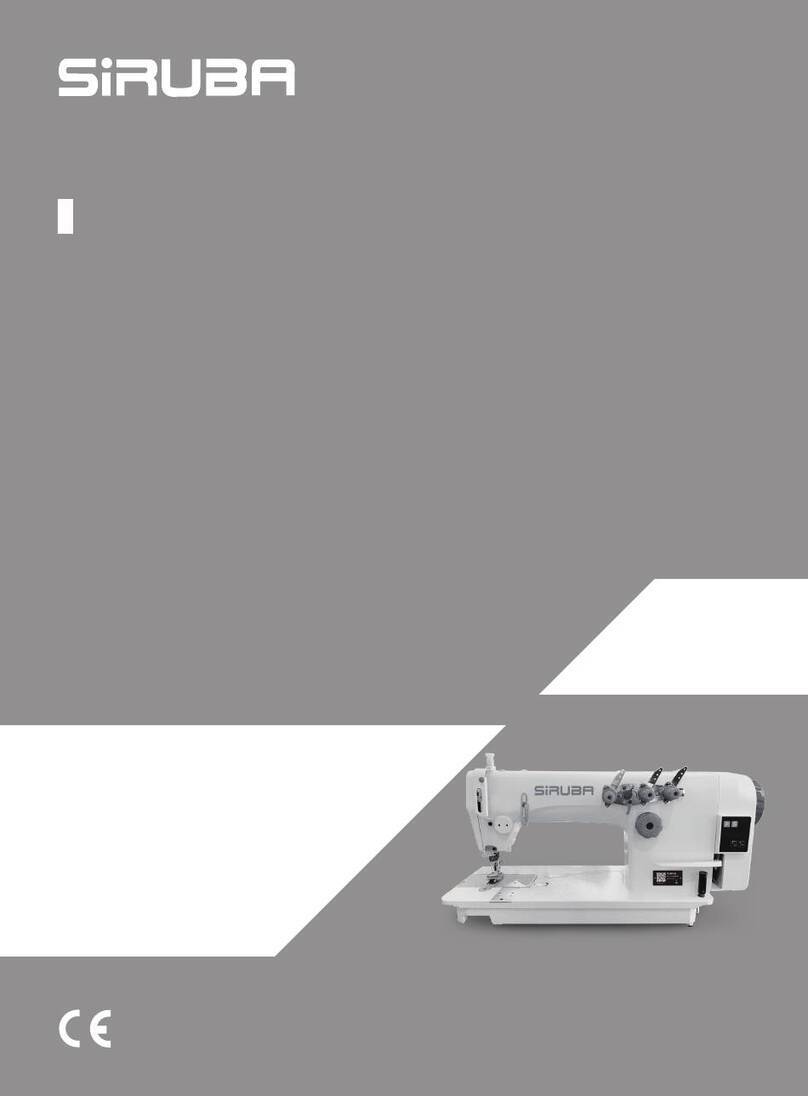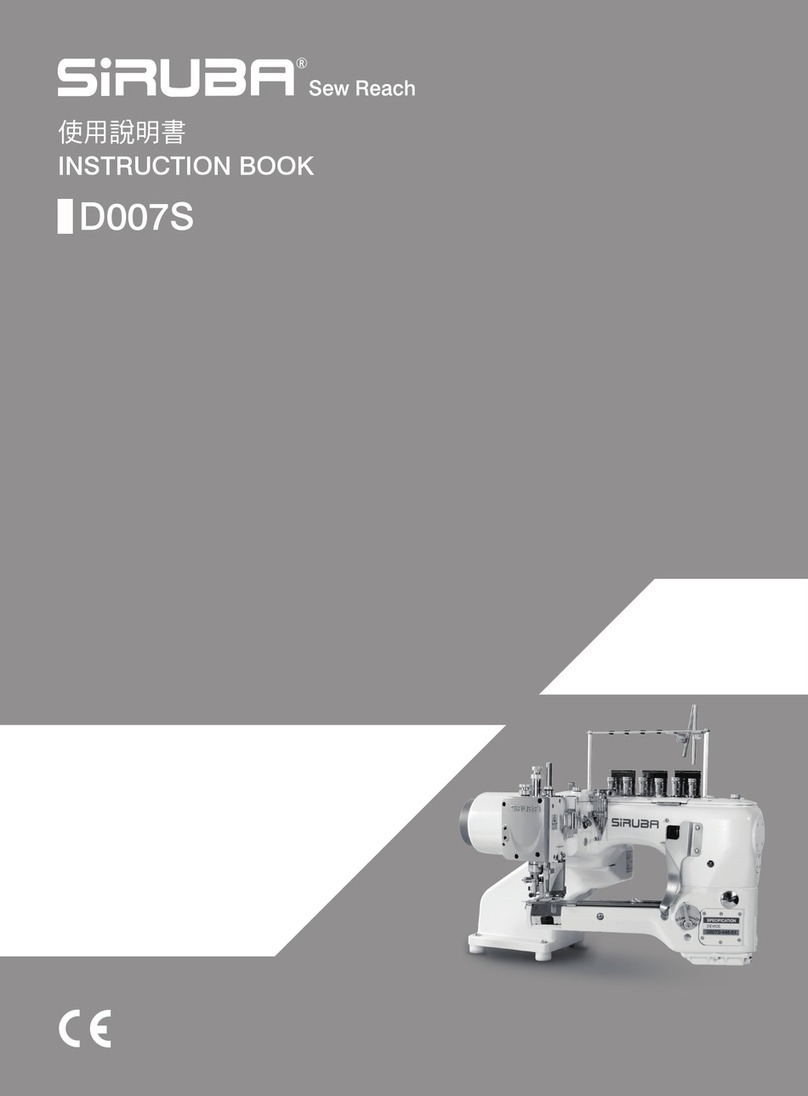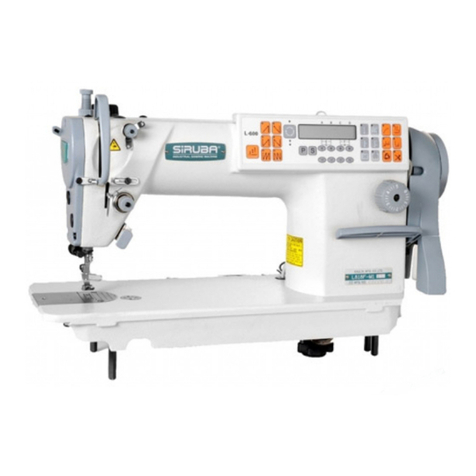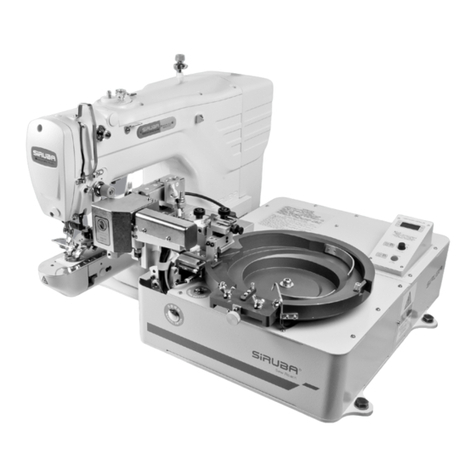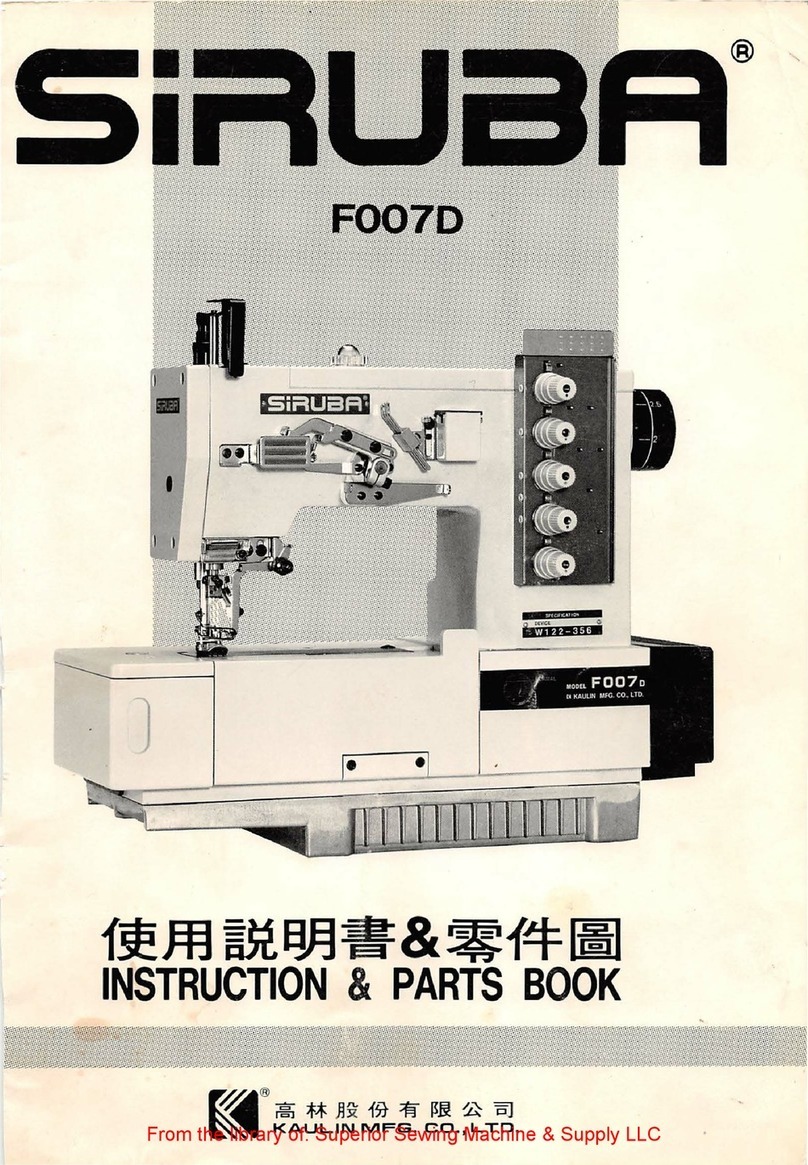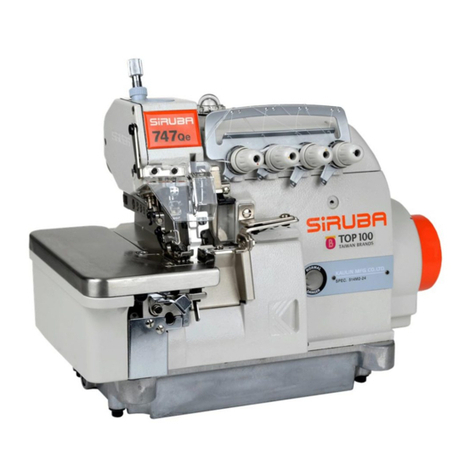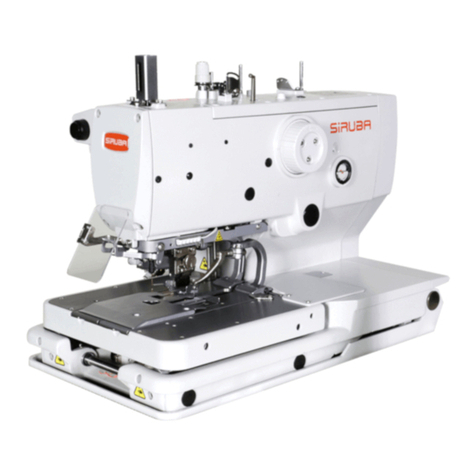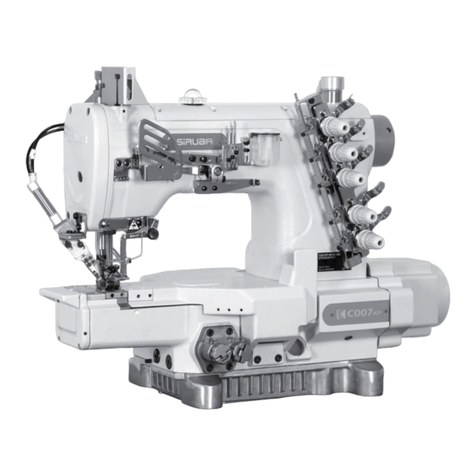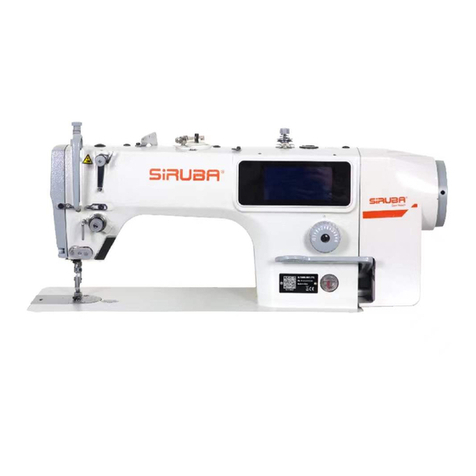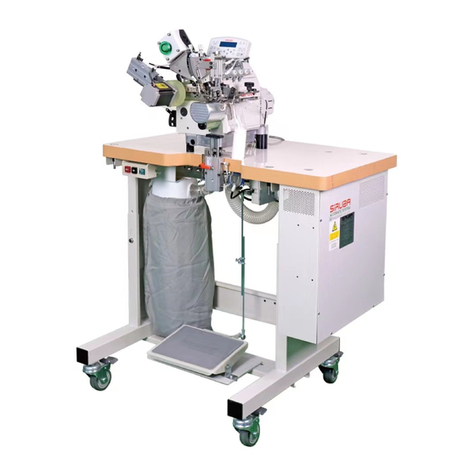CHANGING THE PRESSER FOOT
The presser foot must be changed according to the stitch you sew, or work you do.
CAUTION:To prevent accidents.
Turn off the power switch before you change the presser foot.
1.Turn the hand wheel toward you until the
needle is at its highest point.
2.Raise the presser foot lifter.
3.Remove the presser foot by pushing the
presser foot release lever toward you.
4.Place desired foot with its pin directly under
the slot in presser foot holder.
5.Lower the presser foot lifter and the presser
foot will snap into place.
REMOVING THE PRESSER FOOT HOLDER
5
A
3
4
1
!
You may need to remove the presser foot holder to use
some presser feet.
To remove, raise the presser foot lifter and loosen the
presser foot thumb screw (A).
To attach, tighten the screw after raising the presser foot
holder.
2
-6-
weight woolens,linen.
1.Raise the needle bar to its highest position by turning the hand wheel towards you.
weight woolens,denim
Heavy weight cotton,
2: Needle
illustration 1: Flat side 3.Stop
6.Tighten the needle clamp screw firmly with the screw driver.
5.Push the needle up as far as itcan go.
4.Insert the new needle into the needle clamp with the flat side away from you.
3.Remove the needle by pulling it downward.
2.Loosen the needle clamp screw by turning it towards you.
Changing the needle
Mercerized heavy
duty
Cotton 30-60
100 medium to heavy
gingham,velvet,light
poplin,seersucker,
medium weight synthetics,
Medium weight cottons,
synthetics,fine laces,
For normal sewing,the same size and type of thread should be used in the bobbin as
Use the standard needle.The size of your needle should match the size of the thread
Mercerized 50-60
Machine embroidery
Machine embroidery
For successful sewing of stretch fabrics use stretch needles.
Never use a bent or blunt needle.
on the upper part of the machine.
and both should match the fabric.
NEEDLE,THREAD AND FABRIC CHART
Cotton 60-100
Sillk A
Synthetic
Cotton 60-80
Synthetic
Cotton
Synthetic
Thread Size
All stretch fabrics.
Stretch
80
or
90
80
or
70
Needle
batiste,dimity.
Sheer cottons silk
Needle Size Needle Size
3
2
1
